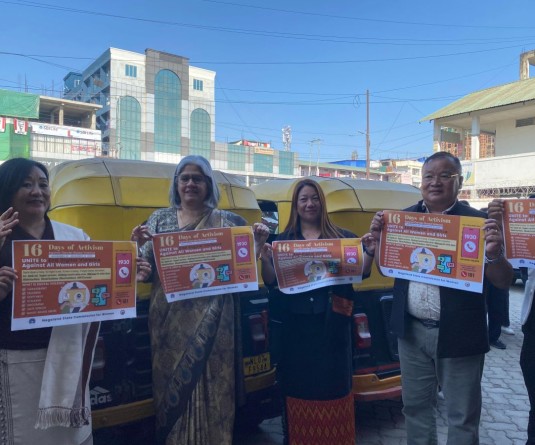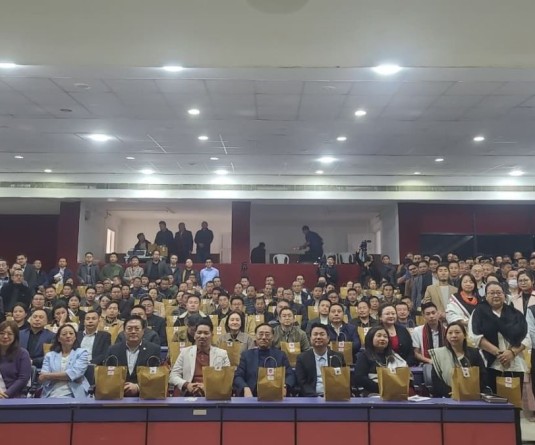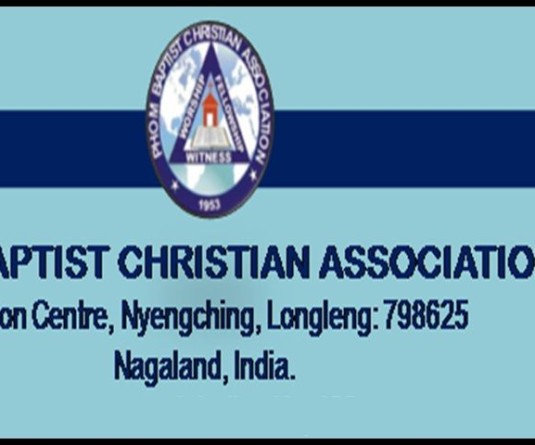
Social media platforms launched for people to share views
Chizokho Vero
Kohima | June 6
The process for formulation of the Nagaland Vision 2030 document started today with the launching of a website, Facebook account, Whatsapp, and email address for the public to share opinions on issues to be included in the document.
The online platforms were launched by Parliamentary Secretary for Planning & Coordination, Evaluation & Monitoring Cell & Taxes, Neiba Kronu.
The Nagaland Vision 2030 document, to be brought out by the Nagaland State Government aims to guide the planning and development process of the state. All submissions to the various online platforms are to be made by June 30, with the entire exercise scheduled to be completed by July 31 this year.
Kronu, speaking during the occasion lamented that in the absence of a vision document there is no clarity or clear concept, which has made funding agencies reluctant to invest in Nagaland.
He claimed that once the Nagaland Vision 2030 is formulated, many funding agencies including World Bank, Asian Development Bank etc would be invited to invest in the state.
An expert group of secretaries headed by former Chief Secretary, Alemtemshi Jamir has been set up to carry forward this vision document. Alemtemshi said the Nagaland Vision 2030 is not a dream but a statement of action and to translate the same into a reality.
He called for the active participation of individuals and civil societies in a preparation of a comprehensive vision document. The document will focus on existing realities and the possibilities for the future, based on the strengths, opportunities, weakness and threats as perceived. It also envisages an action plan to achieve the possibilities of the future.
This vision document aims to be an inclusive document involving the people and not based on only the views of the government departments. In this, it solicited the views from all sections of the society. While correspondences are being initiated to the civil societies, tribal organizations, academic institutions, development NGOs and the churches, it has also been decided to establish appropriate platforms for public to participate in the process by providing their ideas and contributing to the process of evolving a vision for the state.
Further, a template has been put in place to prepare a document that envisions a sustainable, progressive and viable Nagaland.
The submissions, it was informed should lay down the perspectives of what Nagaland can be within the time frame of 2030, outline the short term (3 years) mid-term (next 7 years) and long term (15 years) perspectives and action plans to achieve such perceived goal, address issues and work out a plan of action to tackle them.
The document will also surround evolution of an economy in the state or formation of major driving economic activity covering issues such as production and productivity, services, trade and commerce, designing an economic development model of Nagaland including designing the infrastructure that will create enabling environment for achieving and sustaining the perceived economy of the state, addressing regional disparities especially pertaining to areas like the eastern Nagaland areas and bringing about equitable development in the state.
Other areas include: human development issues with emphasis on youth employment and gender-both urban and rural, spread of urbanization and addressing related concerns of urban development especially pertaining to livelihood, living environment and sustainability of the urban inhabitations, the ecology and environment and sustainable development of Nagaland, funds, Finance and resources for internal generation.
The document aims to also focus on the best approaches for the judicious harnessing of human and natural resources to achieve the vision. Natural resources would include aspects like oil, coal, limestone, water, forest etc.
Any vision for Nagaland also needs to be in consonance with the policies of the Government of India and take into account the quantum of financial support that can be extended by the GoI including the process of devolution of funds to the states. It should also cover the various aspects of the CSS and Central Government policies. It also needs to keep in mind the implementation of the ‘Look/Act East Policy’ NE vision 2020, the BBIM (Bangladesh Bhutan India & Myanmar) and IMT (India Myanmar Thailand) Agreements.
Side by side the projections are also prescribed to take into account the global economic scenario including investments in the state through multilateral and bilateral agencies, EAP and also FDI and private investment.
Suggestions for the vision could include views on the governance issues of the state with a focus on democratization, decentralization and participatory approaches to development that will enhance transparency and accountability. In this, views on VDBs, communitisation and urban bodies will be vital.
Impressing upon the necessity of peace for any development, the vision document is envisaged to be formulated on the premise that a negotiated settlement could soon be in place.






